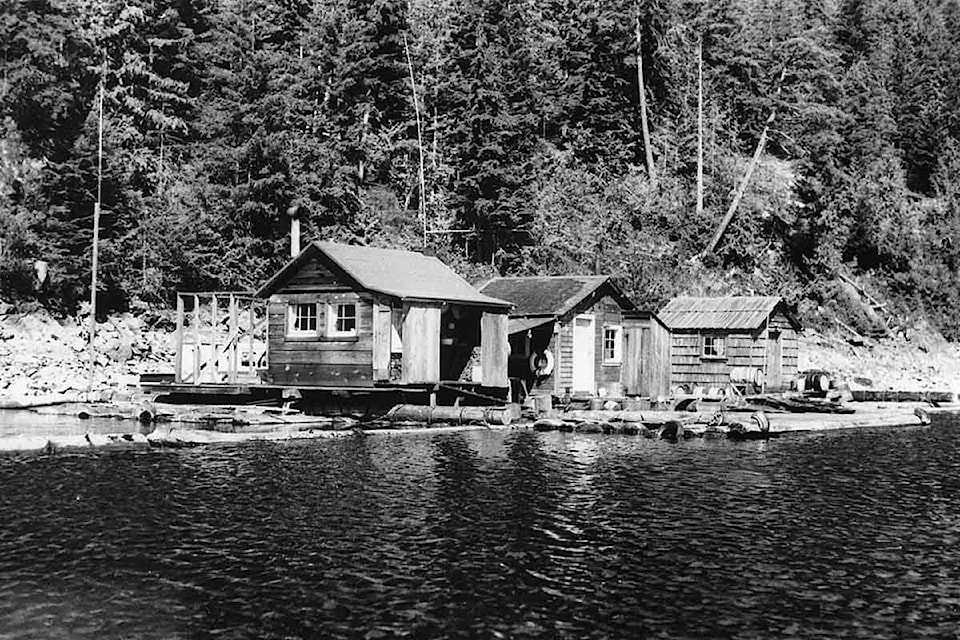By Erika Anderson
When we talk about the history of our coast we often talk about forestry, fishing and mining.
As a result, the experiences of men are generally much better documented than those of women. At the Museum at Campbell River, one exhibit especially focuses on the women’s perspective, and that is the floathouse. When you view the floathouse exhibit, family life is very much in evidence, with all of the needs of a small family packed into a tiny one-room dwelling.
Floathouses, which were once a common sight upon our rocky shores, solved the housing dilemma of handloggers and their families. Handloggers worked on steep terrain and moved frequently to new sites. The floathouse did not require a level building site, and could be towed from one location to another.
Floating camps could consist of a single home, or an entire inter-connected floating village which may even include a school, a cookhouse, a filing shed and a blacksmith shop. In smaller camps families would seek out a nearby land based community when the children reached school age and drag the floathouse up on the beach past the high tide line, often using a steam donkey engine. After living on floats, land based living was often a refreshing change.
The downside however was that this often means that the women and their children were home alone as their husbands were moving to different work sites.
The floats were made of cedar logs because they floated highest in the water. A float could last 20-25 years if it was made of good logs, with some floats lasting longer if they were tied up close to fresh water, discouraging the growth of mussels and barnacles. Boom chains and cable held them together. There would be planks between homes, creating pathways perched above the water.
For families living in floathouses, this was their home and they took measures to give it the feeling of being a land-based home. Gardens were established in dugout canoes or in planter boxes or barrels, and water was piped from springs on shore to give them running water.
In Raincoast Chronicles Thirteen Florence Tickner describes growing up in a floathouse. The children learned to swim at a very young age. There were frequent stories of people, especially children, living in floathouses drowning, and they wanted to avoid having that tragic occurrence happening to their family. With limited options of places to play, she describes being in the water every day from May 24 until early September, the children scarcely having the chance to let their bathing suits dry. They would even sneak out sometimes at night and go skinny dipping! Some floats had fences around them to help keep children in.
Another risk associated with floathouse living is demonstrated by the story of the Schnarr family. When the children reached school age, August Schnarr moved his family from Bute Inlet to Owen Bay where there was a larger community and a school.
While towing the home, containing all of their possessions, a vicious Bute wind came up suddenly and sank their home. The family was forced to rebuild from scratch after this devastating loss, not an easy thing to do when living far from town.
Florence Tickner concluded by saying “That little house, with its lack of space, comfort, style, or any modern conveniences, was a loving home to us, and we wished for no other,” proving that no matter where you live love can make a house feel like home.
